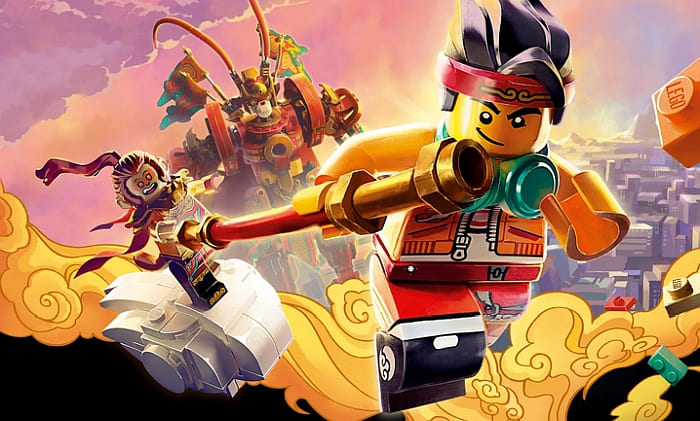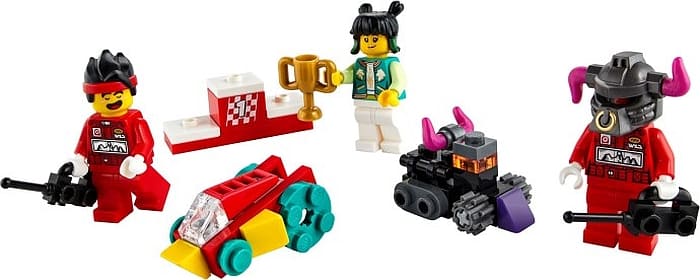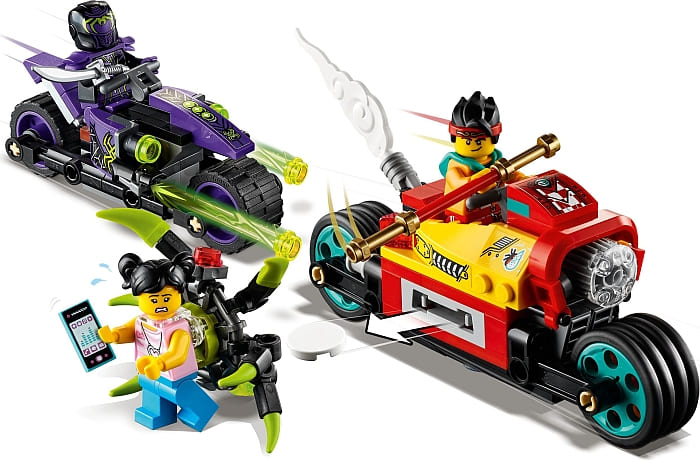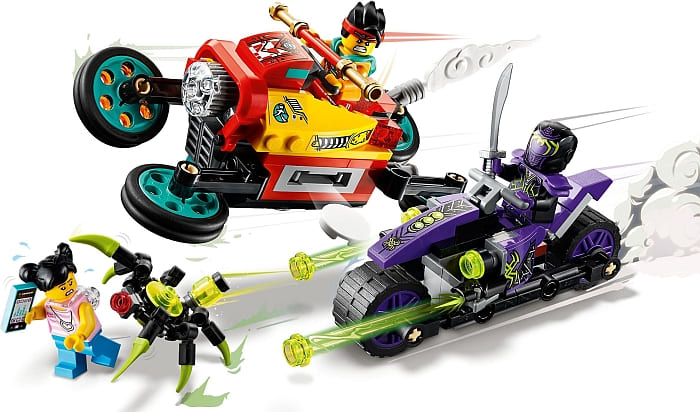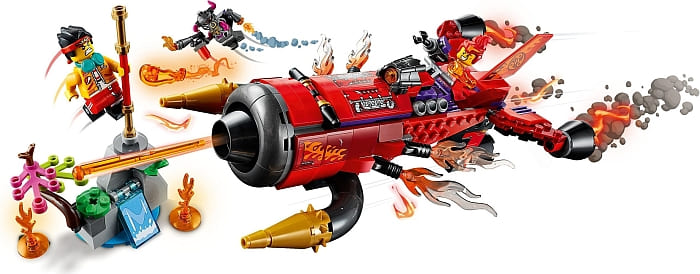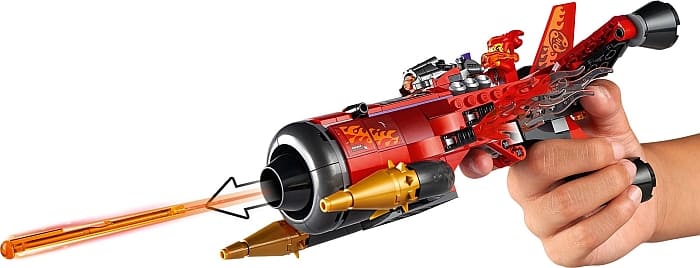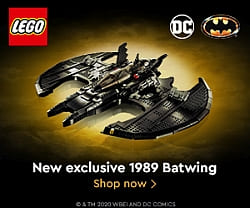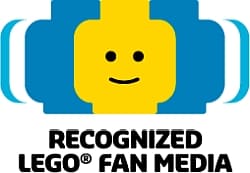Here is an interesting opportunity. The LEGO Group is looking for the first-ever Kid Creative Director for the Kids Creative Studio, inspired by LEGO VIDIYO. Mentored by leading creative professionals from the LEGO Group, Kids Creative Studio will discover and elevate the best creative kid talent with an amazing opportunity to create official LEGO content, along with music videos, that puts their full skills on display for the world. Below are the details if you or someone you know might be interested.
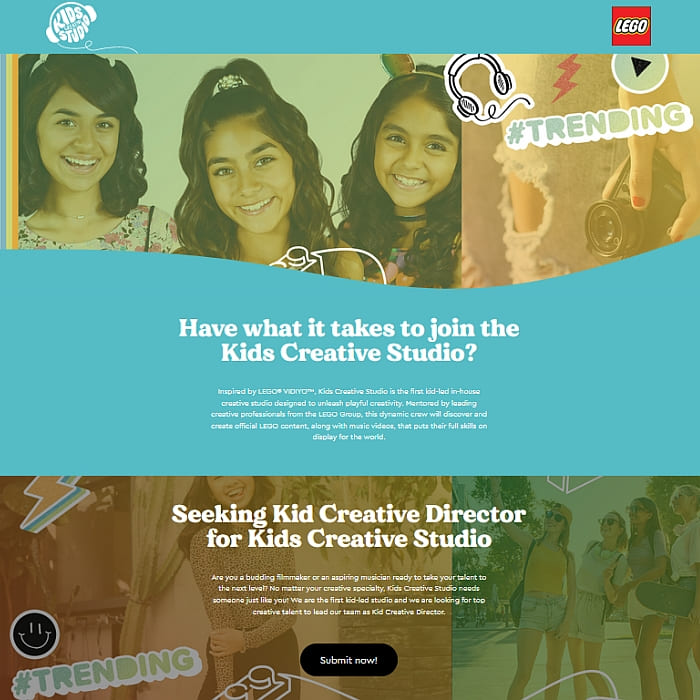
We are seeking a unique kid with a passion for creativity. What inspires you? We believe creativity has no bounds and want to see it in all forms. If you are a kid aged 7-17, and would like to apply, submit a video or pictures (photos, drawings, etc.) telling us about yourself, how you unleash your creativity, and what you know (or love) about the LEGO brand.
You’ll have the chance to win $10K in value for creative and educational purposes. As Kid Creative Director of the Kids Creative Studio, you will have the unique opportunity to join a team of renowned creative kids, mentored by leading creative professionals from the LEGO Group. Together, you will come up with, create, and launch LEGO content, promos and music videos with LEGO VIDIYO for the world to see. Below is a video intro for Kids’ Creative Studio, featuring some of the kids who are already involved with the project.
The application process is fairly simple. All kids have to do is create a short 1-2 minute video (or submit a few images) sharing about themselves, showing off their creativity, and answering a few questions about why they love LEGO. To help with the process, there is a prompts worksheet, submission guidelines, and links to important documents (submission form, rules, permission agreement from parents) at the Kids Creative Studio Application Page.

The deadline for submission is Sunday, April 18 2021, 11:59pm ET. Selected creators will be announced on Wednesday, May 12. One potential winner will be picked by a panel of Kids Creative Studio team members, the LEGO Group marketing team, and/or creative agency, and select external partners with expertise in creative marketing initiatives based on the Entry Guidelines and Content Restrictions. Submissions will be judged based on creativity (ability to reflect an innovative or interesting approach within the submission), originality/playfulness (fresh, playful, and entertaining idea/concept, and presentation (submission is of quality and clearly showcases the idea of concept in an easy to follow and organized way).
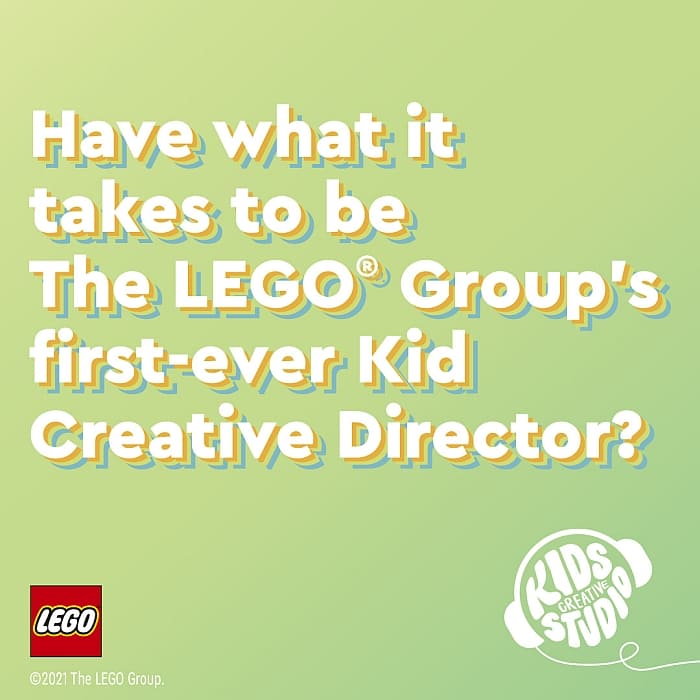
The one selected creator may have their work and submission shared across LEGO Group social, digital and wider marketing channels. They may also participate in media interviews on the selection process for the first Kid Creative Director for Kids Creative Studio. Mentored by creative professionals from the LEGO Group, the selected creator will participate in brainstorms and creative workshops with Kids Creative Studio team members to produce and launch LEGO branded content, along with music videos, for external purposes and social channels, and they will receive $10K in value to put toward creative and educational endeavors in their parent’s name (at the discretion of the company). Additionally, up to five finalists may be chosen and may have their work shared across LEGO social digital channels, external content and in media coverage and receive select products/merch (at the company’s discretion).

If you are a kid, or if you know a kid who would be interested, feel free to share this information, and direct them to the application page. If you have any comments or questions, you are also welcome to share in the comment section below.
And you might also like to check out the following related posts:


